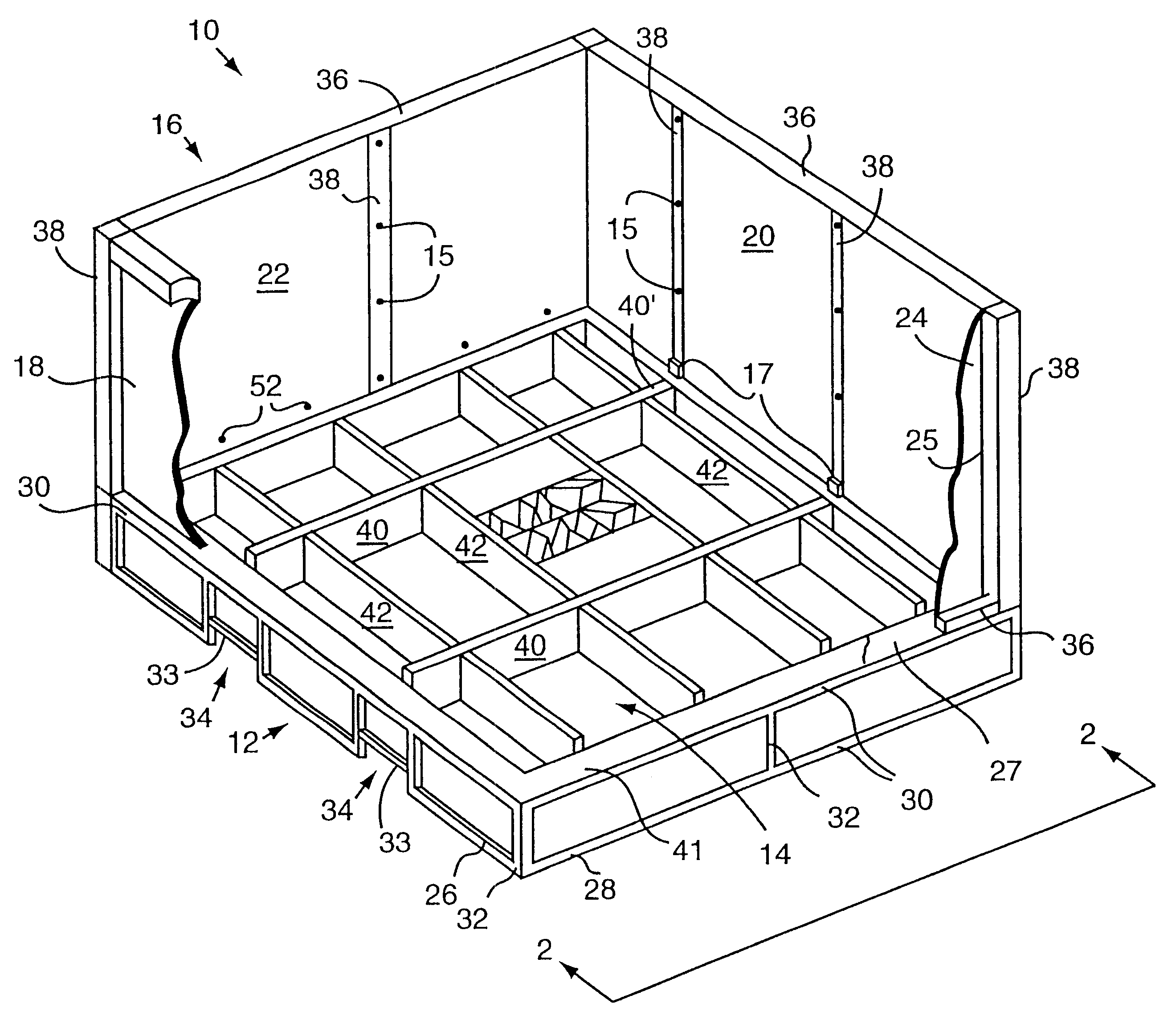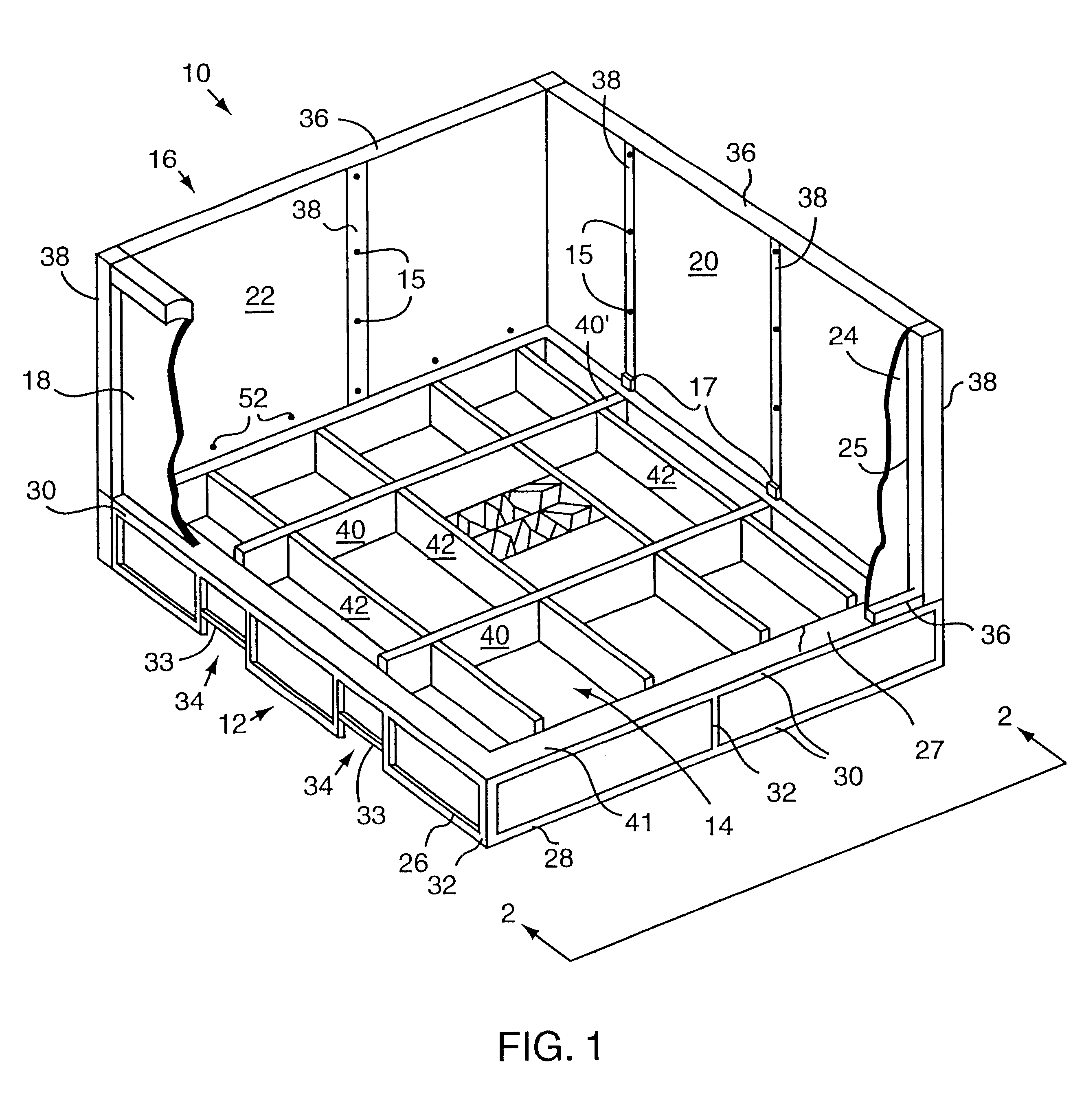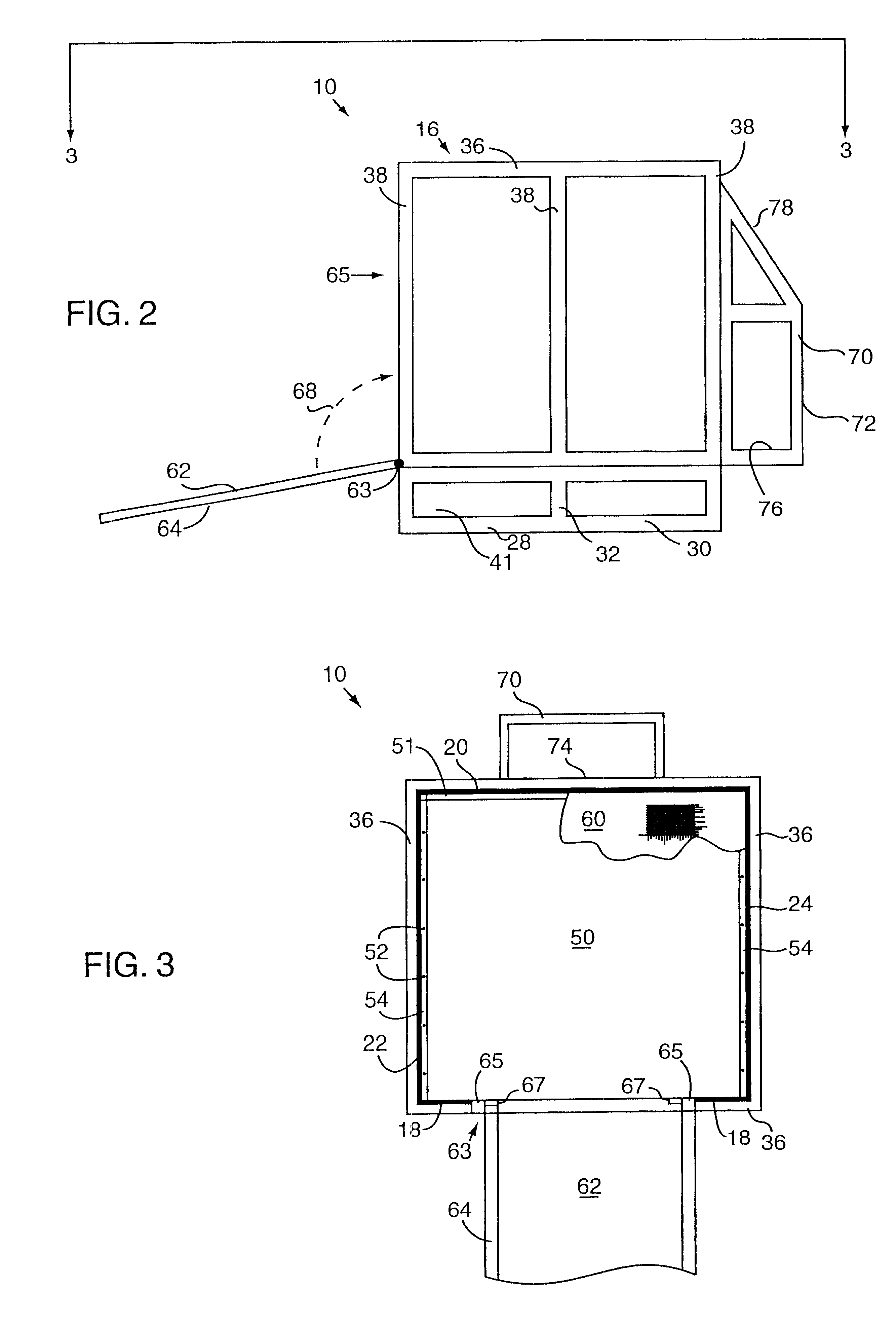Method and apparatus for pressure washing
a pressure washing and pressure washing technology, applied in the direction of liquid displacement, vehicle cleaning, cleaning using liquids, etc., can solve the problems of chemical running off the roof and into the surrounding environment, contaminating the environment by man-made substances, and affecting the effect of cleaning
- Summary
- Abstract
- Description
- Claims
- Application Information
AI Technical Summary
Benefits of technology
Problems solved by technology
Method used
Image
Examples
first embodiment
FIGS. 1, 2, and 3 show a pressure washing apparatus, or wash rack, 10 which includes a base frame 12, a containment tub 14, and a wall frame 16 in accordance with the present invention. Front and rear walls 18, 20 and left and right-side walls 22, 24 are affixed to wall frame 16, thereby forming a rectangular enclosure into which an object is placed for washing. It should be appreciated that in FIG. 1, the front wall 18 and right wall 24 are shown in cutaway, in order to enable details of the tub to be shown.
The base frame 12 is a generally rectangular structure comprising four base side frames, although it should be appreciated that base frame 12 may take on any suitable shape. A front base side frame 26 and a right base side frame 28 are shown in FIG. 1. It should be appreciated that similar rear and left base side frames are also provided. Each of the base side frames is formed from horizontal beams 30 that are joined to vertical posts 32. The beams 30 and posts 20 may be welded ...
second embodiment
FIG. 9 is a top view of a beam, or baffle, arrangement in a washing apparatus with debris filters in accordance with the present invention. When objects to be washed in the washing apparatus are particularly soiled, in addition to contaminants, debris may be washed from the objects. Debris may include heavy particles such as, by way of example, metal shavings and rubber residue. The gap that is provided on three sides of the subfloor placed in the washing apparatus, as described above with respect to FIG. 3, enables washing fluid and debris to flow into the tub. The debris may settle on the floor of the tub, as mentioned above with respect to FIG. 4. However, in one embodiment, debris filters or "gutters," which serve to capture at least some of the debris as it flows through the gap on the sides of the subfloor, may be added to the washing apparatus.
Beams 40, 442 rest in tub 14, and fit snugly against one another to form a plurality of containment compartments A, B, C, D, E, F, G, ...
third embodiment
The organization of beams in a washing apparatus, as well as the relative location of openings in the beams, may also be varied. For example, with reference to FIG. 10, a beam arrangement within a tub will be described. Baffles 520, 524 are arranged within tub, or basin, 514 such that baffles 520, 524 interlock with respect to one another to define a plurality of compartments M, N, O, P, Q, R, S, and T within tub 514. In the described embodiment, baffles 520, 524 substantially abut sides 528 of tub 514. That is, each end of each baffle 520, 524 abuts a side 528 of tub 514.
To ensure that there is substantially no gap between baffles 520, 524, and sides 528 of tub 514, the ends of baffles 520, 524 are generally attached, e.g., welded, to sides 528 of tub 514. Portions of baffles 520, 524 which contact the bottom of tub 514 are typically also welded to ensure a seal between baffles 520, 524 and the bottom of tub 514. Such a seal essentially prevents water in one chamber from accidental...
PUM
| Property | Measurement | Unit |
|---|---|---|
| height | aaaaa | aaaaa |
| height | aaaaa | aaaaa |
| depth | aaaaa | aaaaa |
Abstract
Description
Claims
Application Information
 Login to View More
Login to View More - R&D
- Intellectual Property
- Life Sciences
- Materials
- Tech Scout
- Unparalleled Data Quality
- Higher Quality Content
- 60% Fewer Hallucinations
Browse by: Latest US Patents, China's latest patents, Technical Efficacy Thesaurus, Application Domain, Technology Topic, Popular Technical Reports.
© 2025 PatSnap. All rights reserved.Legal|Privacy policy|Modern Slavery Act Transparency Statement|Sitemap|About US| Contact US: help@patsnap.com



